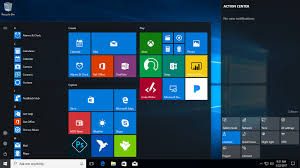
If you’ve been expecting Microsoft to issue a press release formally announcing the end of its Windows phone business, you’re probably hoping for a bit too much. But make no mistake: its phone hardware business is dead. RIP-dead. Send-flowers-dead. Worm-food-dead.
Some fans, and even some in the media, have consistently refused to acknowledge this, despite the clear signs in recent quarters. Now, Microsoft’s own figures, and its statements regarding its phone division, should make it irrefutably clear that there is no life left in its Windows phone business.
During the quarter ending in December, Microsoft’s phone revenue dropped to just $200 million, which included some sales of feature phones, before the company completed its sale of that business unit to Foxconn in November. That figure has now dropped to virtually nothing.
According to the company’s 10-Q filing to the SEC for Q3 FY2015, its phone hardware revenue for that quarter totalled $1.397 billion. One year later, in its 10-Q for Q3 FY2016, Microsoft said that phone revenue had fallen by $662 million, reducing it to $735 million.
Today, as Microsoft published its earnings report for Q3 FY2017, it revealed that its “Phone revenue declined $730 million”. Based on its earlier financial disclosures, that means the company’s phone hardware revenue fell to just $5 million for the entire quarter ending March 31, 2017.
During Microsoft’s earnings call today, its chief financial officer, Amy Hood, acknowledged this, stating that there was “no material phone revenue this quarter”. The outlook for the next few months is similarly bleak, as Hood predicted “negligible revenue from Phone” in the coming quarter.
For anyone who’s been paying attention, this shouldn’t be a surprise. All of Microsoft’s ‘latest’ Lumia Windows phones are now well over a year old, with no sign of direct replacements. In many markets, these devices have been out of stock for weeks – or even months, in some cases. Meanwhile, the new Windows 10 Mobile Creators Update supports only a handful of devices, and delivers only a small number of relatively minor improvements, despite some more significant additions being promised. Additionally, Microsoft recently separated Windows 10 Mobile away from its main Windows 10 ‘Redstone 3’ development branch, which will eventually become its next major update for PCs and other devices in September. In February, Microsoft said that it would continue to release new Windows 10 Mobile builds “beyond the release of the Creators Update”, and so far, it has done exactly that. But with development splintered from that of the rest of Windows 10, a cloud of uncertainty now hangs over the whole platform.
Indeed, for now, the future of Windows 10 Mobile rests in the hands of Microsoft’s hardware partners, including those making new handsets, such as Wileyfox and crowdfunding hopeful WhartonBrooks. But even some of Microsoft’s partners have been less than enthusiastic about its mobile platform.
Earlier this year, the CEO of Japanese manufacturer NuAns spoke with Neowin in an interview, in which he expressed his disappointment over Windows 10 Mobile, and said that earlier discussions with Microsoft had led to higher expectations for the OS, and for the company’s Neo Windows phone. NuAns has now abandoned Windows 10 Mobile in favor of Android for its latest device.
With even its hardware partners questioning the future of Windows 10 Mobile, and its own development no longer following the same path as the rest of its devices – for the first time since Windows 10
Discover more from Applygist Tech News
Subscribe to get the latest posts sent to your email.

nice development from Microsoft